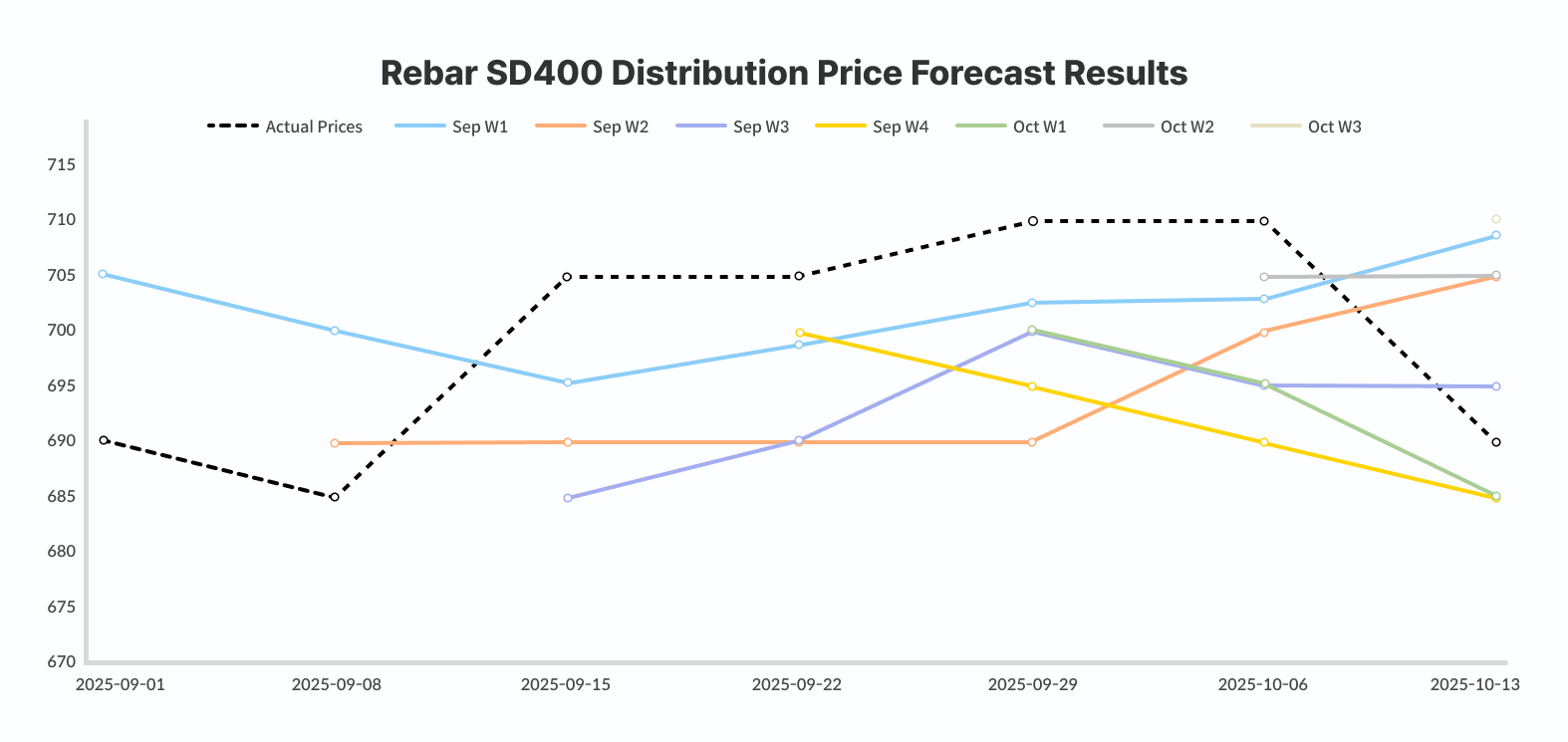AI-Based Raw Material Price Forecasting for Construction Company B

[Summary]
- Company: Construction Company B (Korea)
- Industry: Construction
- Challenge: Reducing uncertainty in purchasing decisions caused by price volatility
- Solution: ImpactiveAI's Deepflow Materials
- Forecast Targets: Rebar, Copper, Hot-Rolled Coil, Coking Coal
- Outcome: Achieved up to 98.5% price forecasting accuracy using Deepflow
1. Customer Company B Overview
Company B is a domestic construction firm that is expanding into new eco-friendly business areas while leveraging its long-established construction capabilities.
As raw material prices became increasingly volatile and global supply chain instability intensified, the uncertainty surrounding purchase timing and contract price decisions grew significantly. In response, Company B initiated a validation project using ImpactiveAI’s Deepflow Materials to shift from intuition-based purchasing decisions to a data-driven forecasting framework.
2. Project Background – Reducing Material Costs and Systemizing Purchasing Decisions
Raw materials account for a substantial portion of construction project costs. Given the rapid fluctuations in global commodity prices, even minor differences in order timing or unit price decisions can result in cost gaps amounting to hundreds of millions of KRW.
Previously, decisions were made manually, based on historical data and market trends. However, as market reactions accelerated, improvements in both forecasting accuracy and speed became essential. Company B therefore pursued AI-based price forecasting for four major raw materials using ImpactiveAI’s Deepflow.
3. Data for More Accurate Forecasting – From Price Data to Global Indicators
To forecast Rebar, Copper, Hot-rolled coil, and Coking Coal, a wide range of variables was incorporated. The choice and quality of input data can drastically impact forecasting performance.
Impactive AI applied an extensive set of supply data, market data, and macroeconomic indicators to generate the most accurate predictions for Company B’s raw material prices.
Data Inputs
The key variables for forecasting differ by raw material. Deepflow identifies and learns the variables that most influence prediction accuracy and provides explanations of which factors had the greatest impact on the results.
For Company B’s raw material price forecasting, a wide range of data was utilized—from raw material price data to construction-industry metrics and global economic indicators.
- Market Data: Wholesale/distribution prices, import prices by country, global futures prices
- Supply Data: Domestic and global production volumes, inventory levels
- Global Economic Indicators: Exchange rates, interest rates, stock indices, government bonds
For rebar, scrap metal prices were the most influential variable, while for copper, global economic indicators had a significantly greater impact. Since the key variables differ by raw material, Deepflow enhances accuracy by analyzing correlations across datasets and incorporating the most impactful variables into the model.
4. Data Modeling – Selecting the Optimal Combination from 224 Models
Raw material markets exhibit complex interactions between numerous variables. Thus, selecting models that best reflect the characteristics of each commodity is crucial. Deepflow evaluated 224 forecasting models and selected the best-performing model set tailored to the characteristics of Company B’s materials and variables.
Model Selection Principles
- Capturing nonlinearity and variable interactions: Must handle time-series data influenced by many exogenous variables such as interest rates, production, and inventory
- Reflecting temporal continuity and long-term dependency: Commodity prices show strong temporal patterns and long-term trends
- Supporting multivariate inputs and interpretability: Must incorporate multidimensional external factors such as global macro indicators and policy changes
Core Models Applied
Company B’s forecasting models consisted of architectures capable of capturing complex price patterns:
- XGBoost (Extreme Gradient Boosting): Used for time-series forecasting involving many exogenous variables (interest rates, production, inventory). Enables rapid prediction and clear insights into variable influence.
- LSTM (Long Short-Term Memory): Used to capture long-term dependencies and continuous trends in raw material prices. LSTM effectively models seasonal and recurring patterns.
- Transformer-Based Models: Applied to incorporate multidimensional factors such as macroeconomic indicators, policy shifts, and supply–demand imbalances. Attention weights enhance interpretability by identifying the importance of each time step.
5. Results – Up to 98.5% Accuracy and Over 96% on Average
After approximately seven weeks of forecasting for each material, accuracy reached up to 98.5% (100 − Mape%).

📊 Rebar Price Forecasting Result
The model successfully captured price increases and decreases, allowing Company B to identify more optimal purchasing windows.

With an average accuracy of over 96.6% across all four materials, Company B confirmed the potential for using AI-based forecasts to support decisions such as purchasing timing, order prioritization, and long-term contract simulations.
6. Conclusion – Verified Impact of Data-Driven Purchasing Decisions with Deepflow
Raw material price volatility has long been a source of uncertainty for companies. However, highly accurate AI forecasting offers a pathway to more strategic and confident purchasing decisions. Through this project, Company B verified that Deepflow can deliver significantly more accurate forecasts than previous methods.
Benefits of Deepflow for Raw Material Price Forecasting
- Quantitative interpretation of complex price fluctuation factors using nonlinear time-series modeling
- Transparent explanations of prediction drivers through attention-based architectures
- Rapid adaptation to global market changes using external indicator–linked modeling
- Continuous performance improvement through periodic retraining and feedback loops
For companies struggling with raw material price volatility like Company B, Deepflow offers a powerful AI-driven approach to reducing procurement and inventory costs while enabling more strategic, data-driven decision-making.


.svg)
%202.svg)
.svg)

.svg)









